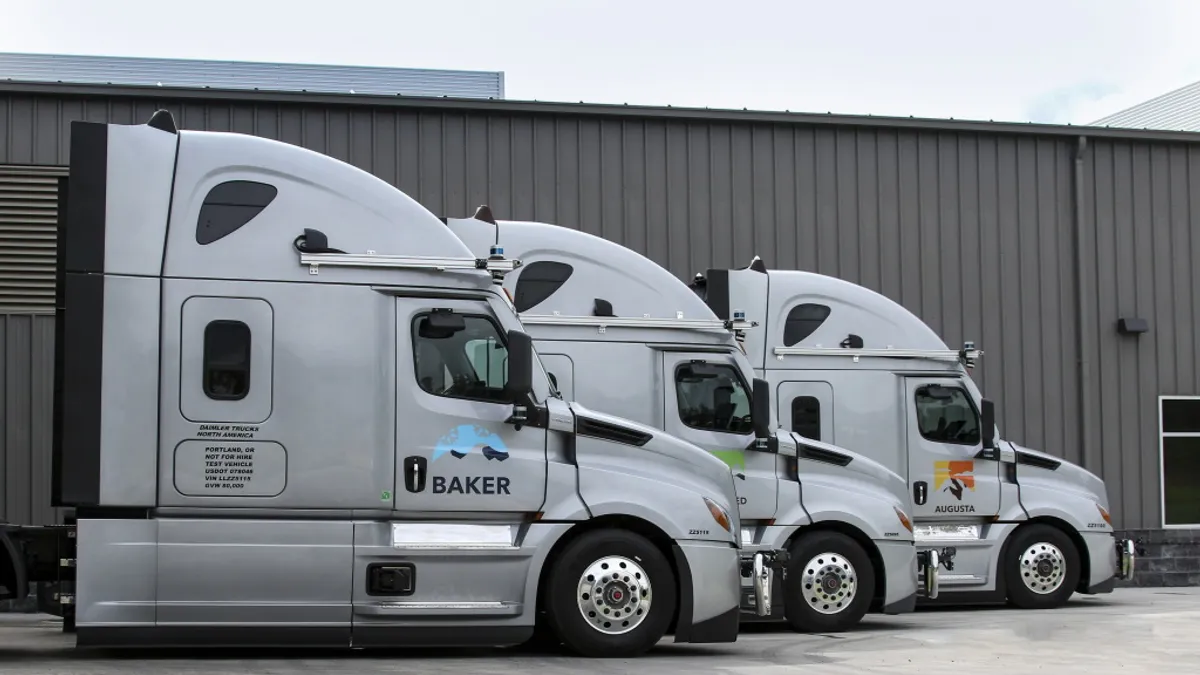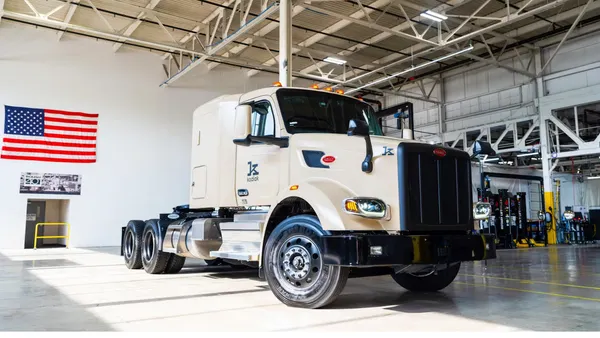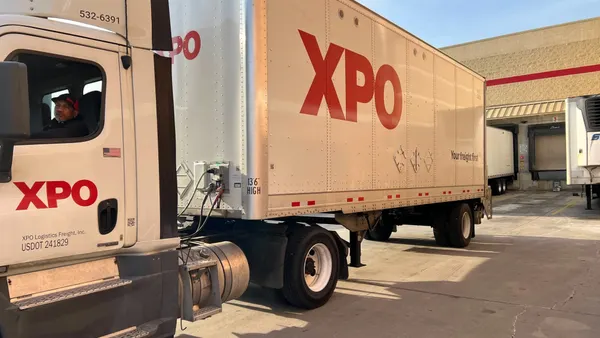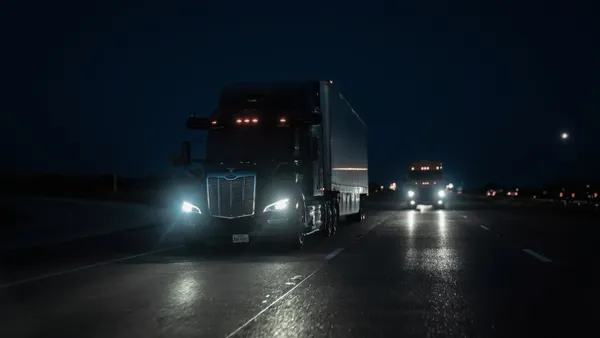Dive Brief:
- Torc Robotics will test autonomous trucks in the Southwest in early 2021 using prototypes developed with Daimler Trucks, according to a Thursday news release. Torc's level 4 self-driving technology will be equipped on a Freightliner Cascadia.
- The test trucks, known as Gen 2, are the second version of self-driving trucks the companies have developed together, according to the release. Daimler and Torc announced their partnership in March 2019, when Daimler acquired a majority share in Torc.
- The challenges to developing an L4 truck start with basics, such as the chassis, said Michael Fleming, Torc CEO. And any market-ready L4 truck must drive as if being helmed by the most experienced truck driver, the companies said. The L4 software and hardware must also respond to any mechanical failure, such as a braking issue.
Dive Insight:
The industry is stepping up testing of autonomous technology and investments in companies that specialize in it. But if Daimler and Torc's statement is any guide, the commercial sale of autonomous vehicles is a long way off.
Daimler and Torc said they have no set date for the beginning of mass production for L4 trucks. Daimler and Torc also declined to say when their L4 technology would be ready for commercial sale. But they said they expect to develop multiple test models before they release a self-driving truck for sale.
Major investors, however, have shown interest in the technology. In July, Navistar took a minority share in TuSimple, an AV firm that has 40 L4 trucks on the road, in the Southwest. One of the reasons for testing in the Southwest is the favorable regulation. Arizona's state government has worked to attract the AV industry, according to the Arizona Chamber Foundation .
TuSimple then attracted an alliance with Volkswagen's Traton Group to test Scania-branded trucks in Sweden.
The technology is also being tested in public ways. In December, Plus.ai completed its first L4 coast-to-coast delivery. The vehicle completed a 2,800-mile journey in under three days, carrying a refrigerated truckload of Land O' Lakes butter from a distribution hub in Tulare, California, to a hub in Quakertown, Pennsylvania.
"SAE Automated Vehicle Level 4 is the industry’s focus now," Ross Froat, director of technology and engineering policy at the American Trucking Associations, told Transport Dive this month. The level does not require a driver in certain conditions. "Driver controls, like pedals and the steering wheel, may not be installed."
But intelligent sensors are key to development. Torc and Daimler officials said its software engineers are working with truck drivers to translate the feelings drivers get when components fail into input and algorithms that the truck's "brain" can understand and react to. Sensors in the truck and outside of the truck will assist in what Torc and Daimler call "high-fidelity perception ... and long-range sensing power, critical for highway driving."
To help with that perception, the federal government and state governments are readying their major corridors. In June, the U.S. Department of Transportation's Federal Highway Administration made a $4.4 million grant to the Ohio Department of Transportation for the I-70 Truck Automation Corridor project, according to a news release. With matching funds, about $9 million will be spent to enhance the 175-mile I-70 corridor between the two state capital cities, Indianapolis and Columbus, Ohio.
Preparation is building up. But when will widespread adoption happen? It will be slow and steady, like an evolution, said Stephan Olsen, general manager of the Paccar Innovation Center, in a recent email to Transport Dive.
"Adoption will grow as the technology is thoroughly validated and tested in specific use cases, starting with linehaul, on-highway applications on simple interstate scenarios and in fair weather conditions," said Olsen.











